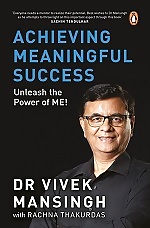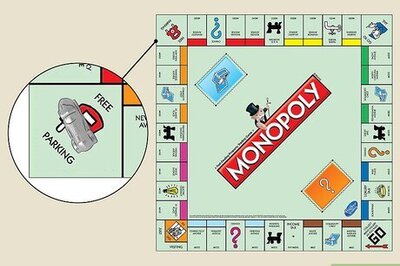
views
When one thinks of ‘industry’ in India, the Tata Group, which has more than a hundred operating companies that contribute to more than 4 per cent of India’s GDP, is probably the first that comes to mind. And so does the name Jamsetji Tata, who was known as ‘the man who saw tomorrow’. With their optimism, persuasiveness, persistence, resourcefulness and determination to control their own destiny even when competing with businesses blessed by the British Raj, I’d say the Tata Group were the first rock star entrepreneurs of India! They transformed themselves from a small trading company, once considered insignificant in Bombay industrial circles, and emerged as the largest indigenously financed and managed industrial group in India.
Since then, India has created the third-largest entrepreneurial ecosystem in the world with more than eighty unicorns (companies of more than $1 billion value) and thousands of healthy, flourishing start-ups and businesses. Today, India needs an even stronger entrepreneurial ecosystem to find innovative and unique solutions for its problems and, in doing so, creating jobs and assisting in overall economic development. As I look back, my own avatar as an entrepreneur was propelled by pure passion. I had this burning need inside to solve a problem that led to the start-ups that I created or was part of. They were ATTI in the US, and Ishoni Networks and Portal Software in India. It has been one of the most rewarding parts of my professional experience. Since then, I have incubated, funded and nurtured numerous start-ups and mentored their founders.
***
Building Your Start-up in Seven Steps
Step 1: Find an idea
The imperative that births ideas are unsolved problems that have made you excited about creating unique solutions that are significantly (not marginally) better than existing products/solutions. iPhone, Tesla, Byju’s, Freshworks, BigBasket are all good examples. Are you passionate about the space and area of your start-up? You will be working for five to ten years in this area, so you’d better be! Make sure your product has a strong differentiated value proposition that can be sustained over a long period of time (40 per cent of start-ups fail because of a poor value proposition).
Step 2: Do a thorough competitive analysis
An understanding of the competitive landscape is extremely important. Many founders gloss over this and face adverse consequences. You need to ask yourself how your competitors’ solutions address the problem your product seeks to resolve. When you arrive at a list of those, don’t dismiss them but seek to understand them as much as you would dissect and understand your own product. Many young entrepreneurs tell me that their idea is unique and there is no direct competition. Let me tell you that I have not come across any start-up that does not have healthy competition. If you happen to be in a situation where competition is limited, it is important to analyse the entry barriers in the product market space that you are working in, to be able to assess the possibility of future competition. Only when you know the competition well can you come up with a differentiated value proposition which will be the key to your success. Competitive analysis is not a one-time exercise; you have to devote a decent amount of time to continuously track your competition. Also, identify a role model company and learn from their journey. Remember, ‘Success leaves clues,’ says Anthony Robbins.
Step 3: Know your Total Available Market (TAM)
This step means that you do a clean and honest estimation of your market. Deep and clever segmentation is a MUST for a start-up. You will be spread too thin if you endeavour to challenge your competition in broad markets. So, you need to be incisively sharp in the segment you are offering the unique value proposition. The Internet of Things (IoT) may be a trillion-dollar market, but you need to consider the specific segment you would be addressing. In that segment, what is your TAM? If you have overestimated or wrongly understood your available market, you are making yourself susceptible to problems related to product configuration, product positioning and, in fact, the business model itself. So, know your TAM and segment very clearly before you sharpen your product or solution.
Step 4: Create a solid business plan and raise seed money
Investors look for strong founders with integrity, passion, commitment, optimism, industry and segment knowledge, a clear vision, and a huge cache of potential. They will be listening keenly to figure how strong and differentiated your value proposition is and how you intend to build your business. While friends, family and angel investors would be the best sources of funds at this stage, make sure you have a powerful business plan in place that captures all aspects of your business over the next three to five years.
Step 5: Create a stellar product or solution and get early customers
Simplicity and user experience are extremely important. Make sure that you create intellectual property, as it installs a barrier to entry for others. It is also important to test the market by introducing a Minimum Viable Product (MVP) as soon as possible by getting a few pilot customers first or, even better, paying customers. This initial validation also helps minimize the entrepreneur’s initial biases and reach the right product–market fit early on.
Step 6: Create a business model
Create a business model indicating exactly how you will be delivering value to the customers. Make sure your business model is cash-flow efficient, has as many variable costs as possible, is capital-light wherever possible and is scalable. Look for opportunities for innovation in your business model. A good and unique business model will not only give your business a boost but can also provide an entry barrier for others.
Step 7: Scale your business
As the business scales, focus on these three pillars:
Pillar 1: Building strong internal teams with three gods
The most important hires will be in your product or solution space. Focus on the three gods of the technology team—product manager, industrial designer/user experience leader and technical architect. Make sure these are A-class people, the best talent you can find. Because these three people will define the potential success of your venture, especially if your venture is in the technology area. In addition, make sure you get the right folk for customer service, marketing, sales and support, and finance, compliance and legal. Don’t just look at their résumés—make sure you get the people with the same values and fire in the belly as yours.
Pillar 2: Building external partnerships
Building channels to take your products and services to customers is a critical success factor. I have witnessed many entrepreneurs expending precious energy managing poorly selected suppliers, distributors and resellers. Ask around and make sure you consider a positive word-of-mouth before making your choices.
Pillar 3: Growing the business
Seek to penetrate deeper into the market with your existing products. When the time is right, expand into new products and geographies. In this, it is important to anticipate changes in the business models associated with new products or geographies.
Soon, it will be time to raise successive rounds of funds from venture capitalists and if you have ticked the boxes in each of the seven steps as shown, you will have investors lining up.

Read all the Latest Opinions here



















Comments
0 comment